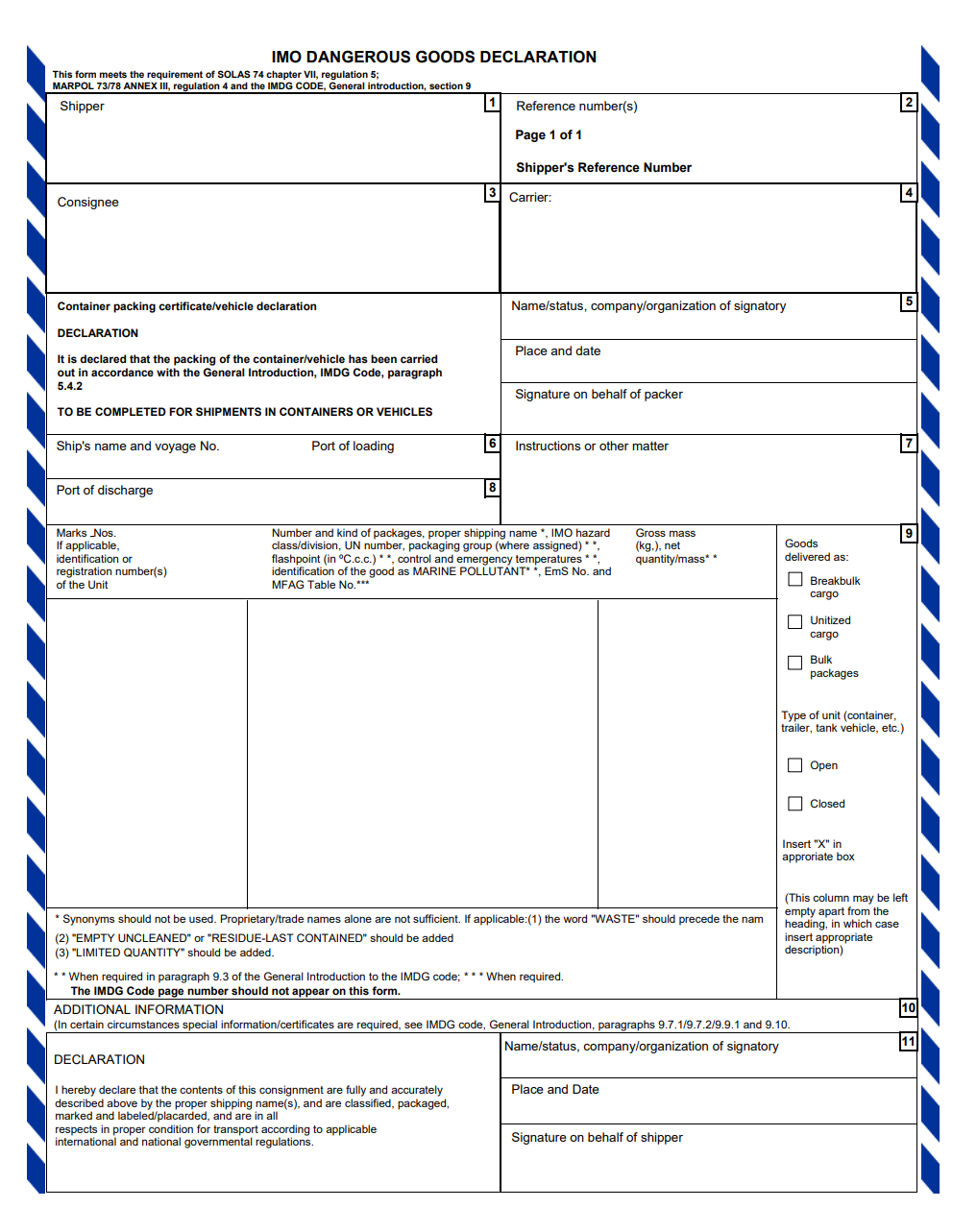Sea transport also some specific sensitivities pertaining to the transport of DG. Though not as strict as aviation, seaborne cargo comes with its own special restrictions and considerations, as well as its own handling needs. Additionally, the majority of seaborne cargo by nature moves between different ports in different countries, necessitating a strong common international standard.
- DG transported in ocean containers can be stored for months a time, and be exposed to a wide range of temperatures.
- Shipping containers can be transhipped through multiple ports globally, and may be stored in the vicinity of a wide range of other DG or heavy machinery.
- The quantities of DG that may be stored on a single vessel may be substantial, and can result in large explosive, toxic, or other hazardous accidents. Crews stranded on vessels at sea may be days away from a rescue, and their health and safety may be heavily compromised.
As it pertains to DG, seaborne vessels take their guidance from the International Maritime Organisation (IMO). The IMO is a United Nations specialised agency with responsibility for the safety and security of shipping and the prevention of marine and atmospheric pollution by ships. The IMO produces what is called the International Maritime Dangerous Goods (IMDG) Code. The IMDG Code specifically outlines the storage, handling, labelling and placarding of DG cargo on vessels. IMDG is also update on an ongoing basis.
The vast majority of sea cargo utilised by humanitarian agencies will be transported using multi-modal shipping containers, or perhaps large oversized cargo such as vehicles. It is unlikely that humanitarian agencies will be responsible for sealing their own containers or be present for vessel loading; to ensure DG is properly handled they must work with a knowledgeable and certified person or company who can advise on the proper packing and labelling of cargo, and who will be responsible for ensuring containers contain the appropriate placards. Humanitarian agencies shipping goods will still be expected to provide as much information as possible, including identifying UN DG Identification Numbers, specifying DG on packing lists, SDS/MSDS/PSDS and supplying supporting documentation.
Dangerous Goods Declaration (DGD)
The IMO “Dangerous Goods Declaration” (DGD) is a standard, industry wide accepted form for properly declaring dangerous goods as they are loaded onto a seaborne vessel. DGDs should be submitted with regular paperwork – such as a packing list – as well as being stored alongside the DG cargo itself. DGDs may not be the only dangerous goods declaration forms used by transporters – some shipping lines maintain their own DG declaration standards, especially if they operate using domestic inland waterways. Irrespective of the form used, DGDs must be filled out and signed by someone who is fully authorised and certified to do so.


